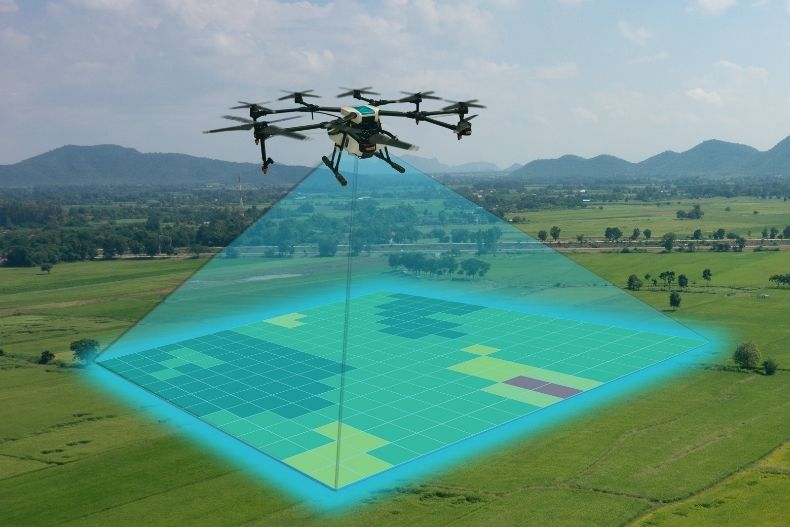Drones have become a ubiquitous feature in the modern world. You’ll come across them in almost every sector of society, with Agriculture being among the biggest beneficiaries of the technology. Reports indicate that the Agriculture drones industry is on course to reach more than 4 billion dollars in 2024.
From surveillance and data collection to security, you cannot underestimate the importance of drones when it comes to improving the efficiency of running a farm. So, just what is the role of drone technology in agriculture.

Crop Spraying
The use of drones to spray crops with chemicals such as fertilizer and insecticides is already pretty widespread, especially in south-east Asia. For instance, South Korea uses quadcopters for almost 30% of its crop spraying. Thanks to the small size of drones, they can access areas that are not easy to reach.
Quadcopters also cover a large mass of land in record time while spraying the chemicals precisely where they are needed. This spares farmworkers the hard task of navigating dense fields while carrying a backpack sprayer, which can be harmful to their health.
Another advantage of using drones for spraying is that they enable you to conduct targeted spraying to maximize efficiency while limiting wastage. Drone sprayer regulations vary widely from one country to another.
For instance, the activity is not yet legal in Canada as there needs to be more testing to understand the effects of spray drift. Some countries dictate that only trained experts can fly the spray drones, which means it can be limited to some farms.
Security
Drone security is one industry that is on the rise and plays a crucial role in farm management. You can use drones to monitor the remote areas of the farm from the comfort of your home, saving valuable time and effort.
Thanks to the high-grade camera fitted on the drones, you can get a true picture of what’s on the ground in real-time. Whether you want to monitor the farm operations underway, locate machinery being used on the farm, or keep an eye on vandals and pests, the drone will give you a comprehensive overview of the farm in a matter of minutes.
Another aspect of drone security is using the devices to locate missing animals from the herd or any that get injured while grazing. All these tasks have been simplified with the help of drone technology, resulting in smoother and more efficient farm operations.
Assessing Field Conditions
Drones are also being used to monitor the field conditions such as the health and structure of the soil. Thanks to applications like mapping, quads can provide accurate information on field elevation that farmers can examine for any inconsistencies in the field.
With all the information regarding field elevation on hand, it is easier to determine drainage patterns and figure out any dry spots for more efficient irrigation techniques. Some drone manufacturers also fit their products with special sensors that can monitor the level of nitrogen in the soil.
This enables farmers to apply fertilizer more efficiently so that there are no infertile spots on the farm.
Monitoring Plant Health
Another important role that drones play in agriculture comes in the form of plant monitoring. Some drones are equipped with specialized imaging tools known as Normalized Difference Vegetation Index (NDVI). These make use of detailed color information to display the health of plants.
With this knowledge, the farmer can follow up on the health of plants as they grow and react early enough when he notices something amiss to salvage the plants. Even drones with ordinary cameras play a role in monitoring crop health (check Contixo’s f22 review).
By tracking crop density, growth, and coloration using satellite imagery, planters stay ahead of any unwarranted situations. The only thing is that satellite data is usually more costly and less effective compared to drone imaging.
Given that drones fly closer to the field, the resulting images are not affected by factors such as dense cloud cover or poor lighting conditions, which can greatly reduce the integrity of satellite images. In case of any lingering gaps in the field after the planting season, a farmer can quickly spot this using drone imaging and replant the patch as necessary.
Drone Pollination
This is just one of the latest applications of drones in agriculture still under experimentation and development. It is an exciting prospect that uses a minute drone to pollinate plants. Researchers in countries like Japan and the Netherlands are leading the charge to produce a small drone that can pollinate crops without causing damage to the plants.
Very soon, we will have autonomous pollinating drones able to monitor plant health without being controlled by an operator. This will go a long way to boost the yield of the farm all year round.